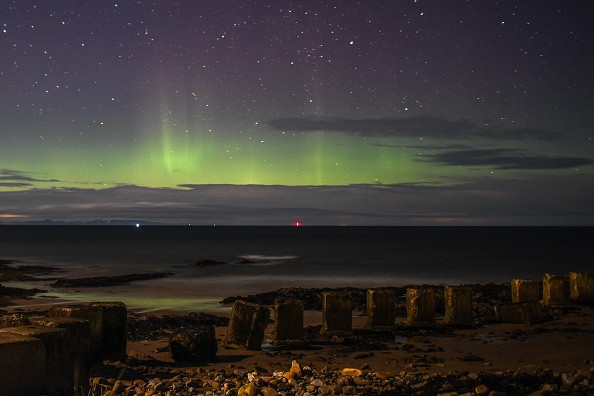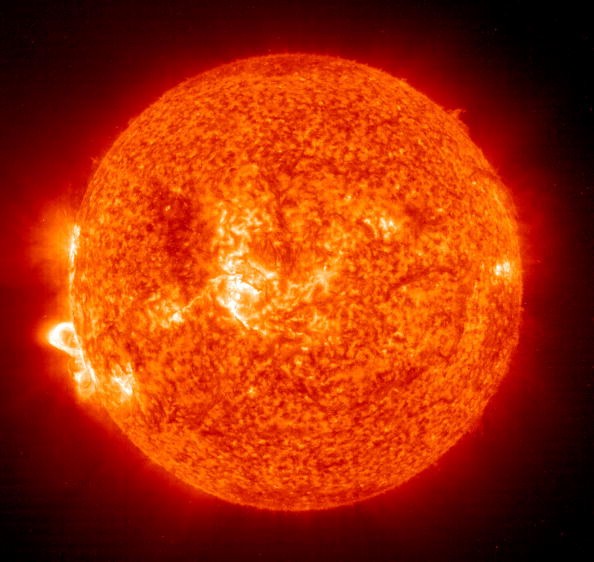No, this isn't a Halloween trick; this weekend, the sun is set to give skywatchers a spectacular treat. It is a magnificent show of the Northern Lights, making it one of the best chances to witness the aurora in 2021.

X-Class Solar Flare

On Thursday, the sun exploded in a huge X-class solar flare, shooting charged particles into space and toward the Earth. When a Coronal Mass Ejection (CME) hits Earth, it interacts with the planet's magnetic field, producing breathtaking hues in the night sky.
When a larger CME happens, like the one this week, the aurora may be seen shining in the sky farther south, including regions of the contiguous United States and northern Europe.
Related Article : Earth May Face a Particularly Strong Geomagnetic Storm on Halloween Due to X-Class Solar Flare
Northern Lights
The Aurora Borealis is expected to be at its peak the night before Halloween, often known as Mischief Night.
A "strong" geomagnetic storm is expected to arrive on Saturday, Oct. 30, and last through Halloween, according to NOAA's Space Weather Prediction Center (SWPC). This implies that the best chance of seeing the aurora will be on Saturday night, while the storm may last into Sunday night.
Where to look for
The aurora glow is frequently observed across New England, the north-central United States, and parts of the Pacific Northwest when solar storms of this scale occur. On the other hand, Clouds may frustrate those wanting to witness the celestial lights for the first time.
The Upper Midwest, middle Plains, and the northern Rockies are expected to have the finest weather on Saturday night. As a result, residents in these places should seek a dark location away from crowded areas where light pollution might obscure the aurora's brilliance.
Due to a slow-moving storm spinning over the region with rain and broad clouds, people in the Northeast and Ohio Valley are unlikely to view the aurora.
Disruptive clouds are also expected over parts of the northern Plains and the eastern Canadian Prairies and portions of Ontario and Quebec across the border.
Solar Storms
Large solar storms may do more than only cause the aurora to appear in the sky when they strike the Earth.
On Halloween in 2003, a succession of large solar flares generated one of the most spectacular solar storms in modern history. According to NASA, during the 2003 Halloween solar storms, individuals as far south as Florida saw the eerie glow of the Aurora Borealis on the northern horizon.
Satellites and electricity systems were also disrupted.
"The effects of these storms were ghastly enough that [aircraft controllers] had to reroute planes, it disrupted satellite systems and communications, and it caused a power outage in Sweden for about an hour," said Dr. Holly Gilbert, a solar scientist at NASA's Goddard Space Flight Center in Greenbelt, Maryland.
With the approaching solar storm, no recurrence of the 2003 catastrophe is predicted, but the SWPC warned that there might be some interference with radio and navigation equipment, as well as false alarms with specific power systems.
Space Weather

The X-class solar outburst that occurred this week was the most powerful on the sun since Jul. 3, 2021. That flare created a CME, but it was diverted away from Earth, leaving fireworks as the sole light show in the sky on Jul. 4.
As the sun reaches a phase known as the solar maximum, more incidents like this will be conceivable in the following years.
Read also: Powerful Solar 'Superflare' That Only Occurs Once Every 10,000 Years: Can it Happen Today?
For more cosmic news, don't forget to follow Nature World News!
© 2025 NatureWorldNews.com All rights reserved. Do not reproduce without permission.





